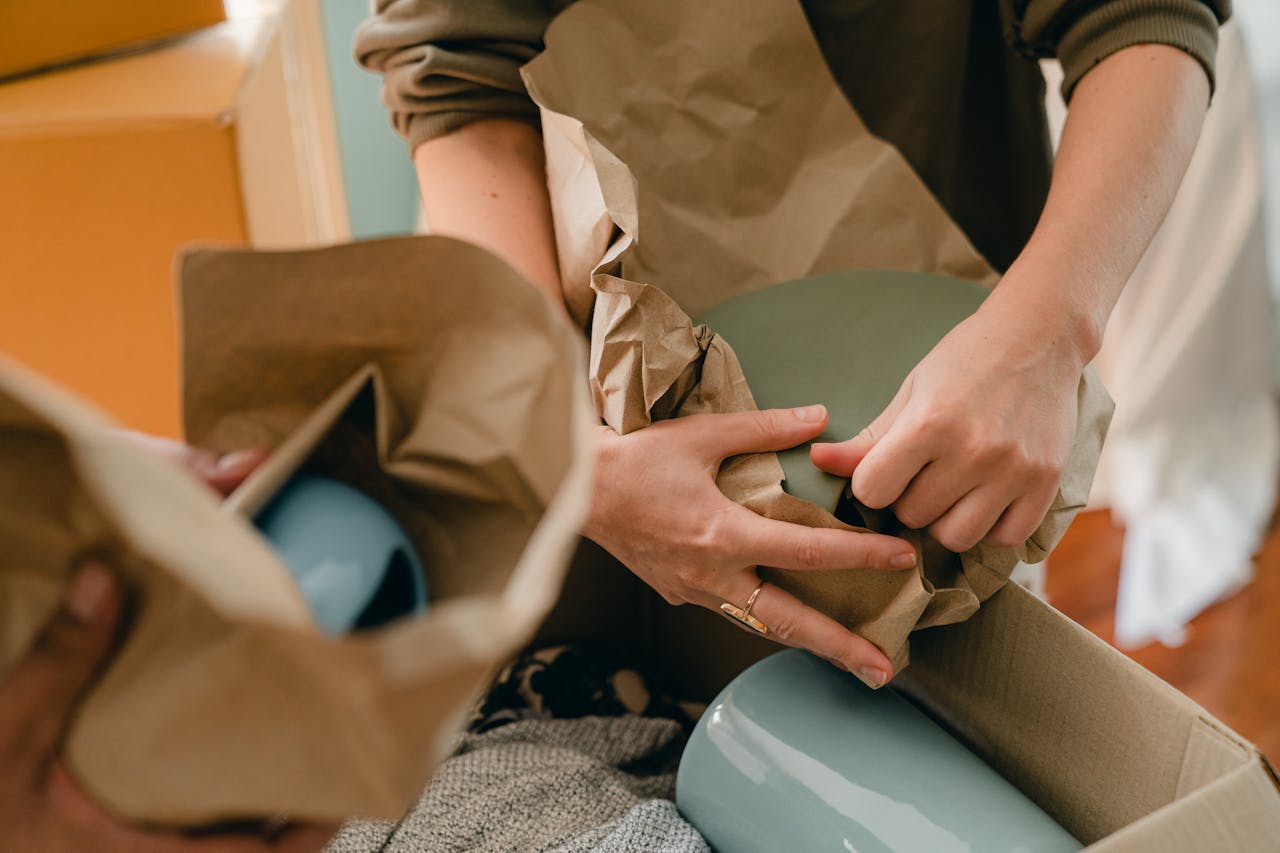Documenting and Cataloging Your Pottery Pieces Before a Move
Posted by Jane Stewart on 11th Aug 2024
When preparing for a move, making sure your prized pottery pieces arrive safely at your new home is important. Documenting and cataloging your pottery pieces is the very first step to protecting these delicate items. This guide will help you understand the importance of proper documentation and cataloging, as well as how to execute it effectively.
Why Cataloging Your Pottery Pieces is Important
Cataloging your pottery pieces before a move is necessary for several reasons:
- It helps you keep track of your collection so nothing gets lost during the move.
- A detailed inventory can be invaluable for insurance purposes, proving your collection's value in case of damage or loss.
- Proper cataloging makes unpacking easier, allowing you to set up your new home quickly and efficiently.
Cataloging your pottery pieces is the initial step in safeguarding these delicate items.
Step-by-Step Guide to Cataloging Your Pottery Pieces
Here is a detailed step-by-step guide to help you catalog your pottery pieces effectively before your move.
Gather Necessary Supplies
Before you start cataloging, gather the necessary supplies. You will need a digital camera or smartphone, a notebook or digital note-taking app, bubble wrap and packing materials, labels, markers, and a computer to create an inventory spreadsheet. Having all these items ready will make the cataloging process smoother and more organized.
Clean and Inspect Each Piece
Carefully clean each pottery piece to remove dust and grime. Inspect each item for any existing damage, such as cracks or chips. For insurance purposes, each piece's condition must be documented before the relocation. Cleaning and inspecting your pieces will also help you notice any features you should highlight in your catalog.
Moving forward, take clear, high-resolution photos of each pottery piece from multiple angles. Make sure you capture any unique features or existing damage. High-quality images provide a visual record that complements the written descriptions of your items.
Create a Detailed Description
In your notebook or digital note-taking app, create a detailed description for each piece. Include the item name, dimensions (height, width, depth), material (e.g., porcelain, earthenware), artist or manufacturer (if known), date of creation (if known), condition (noting any existing damage), and any unique features or markings.
Assign a Catalog Number
Assign a unique catalog number to each pottery piece. This number will help you keep track of your items and match them to their descriptions and photos. Use a simple numbering system, such as "P001," "P002," and so on. Catalog numbers make it easier to organize and reference your items quickly.
Create a spreadsheet on your computer to compile all the information. Each row should represent one pottery piece, with columns for the catalog number, item name, dimensions, material, artist/manufacturer, date of creation, condition, as well as any unique features. If possible, attach the corresponding photos to each entry. A digital inventory makes updating and sharing information about your collection easy.
Label Each Piece
Label each pottery piece with its catalog number using a removable label. Make sure the label is secure but easy to remove without damaging the item. If properly labeled, each piece can be easily identified and matched to its catalog entry. Labels are especially useful during the packing and unpacking process.
Use packing paper, foam, and bubble wrap to protect each piece.
Packing Your Pottery Pieces Safely
Use bubble wrap, foam, and packing paper to protect each piece. Wrap each item individually, making sure that all parts are well-cushioned to prevent movement and damage during transit. Proper packing materials provide the necessary protection to keep your pottery safe during the move.
Pack heavier pieces at the bottom of the box and lighter ones on top. Fill any gaps with packing peanuts or crumpled paper to prevent items from shifting. Use sturdy, double-walled boxes for added protection. Strategic packing minimizes the risk of damage and keeps your items secure.
Clearly label each box with "Fragile" and "Handle with Care." Include a brief description of the contents, such as "Pottery - Box 1." This labeling will help movers handle your items with the appropriate care and make unpacking easier. Clear labels make sure that your boxes receive the careful handling they require. For more packing advice and tips on handling delicate items, visit mybrooksmoving.com, a trusted mover specializing in secure and efficient relocations.
Documenting Your Collection for Insurance Purposes
Cataloging your pottery pieces is not just about organization; it also plays a critical role in insurance. Make sure your inventory is detailed and includes photos and descriptions. Share this inventory with your insurance provider so they can adequately cover your collection during the move. Proper documentation helps protect your investment and makes it easier to file claims if necessary.
The Benefits of Proper Cataloging
Knowing that your pottery pieces are thoroughly documented and cataloged provides peace of mind during the stressful process of moving. A detailed catalog protects your items and provides you with a comprehensive record in case of any issues. This careful organization simplifies unpacking and organizing in your new home, saving you time and effort, and ensures efficient setup. Proper documentation protects your investment by accurately reflecting each piece's details and condition. This accuracy ensures you receive fair compensation if any items are damaged or lost.
Moreover, a detailed catalog streamlines insurance claims. In the unfortunate event of damage or loss, having photos and precise descriptions allows you to provide accurate information to your insurer, resolving claims quickly and efficiently. Accurate records promote accountability and transparency, reducing the risk of misunderstandings or disputes with movers and insurance providers. This meticulous cataloging approach safeguards your collection and supports a smooth and stress-free moving experience.
Labeling makes sure your boxes are handled with the caution they need.
Tips for Effective Cataloging
It's important to maintain a consistent system for cataloging your pottery pieces. Regularly updating your inventory and ensuring that all information is accurate and up-to-date helps you manage your collection more effectively. Leveraging technology can enhance this process; digital tools like spreadsheets and cloud storage keep your inventory accessible and secure. Technology streamlines the cataloging process and makes it easier to share information.
Regularly backing up your digital inventory is crucial to prevent data loss. Keep copies of your catalog in multiple locations, such as an external hard drive and cloud storage, to ensure continuous access to your inventory information. Additionally, consider hiring professional packers or movers who specialize in handling delicate items like pottery. They offer expertise and resources that add an extra layer of protection and safely transport your collection.
Conclusion
Documenting and cataloging your pottery pieces before a move is vital in ensuring their safety and preserving their value. Following the steps outlined in this guide, you can create a detailed inventory that will protect your collection, simplify the moving process, and provide peace of mind. Careful planning and organization are key to a successful move, so take the time to document and catalog your pottery pieces properly.
Author Bio

Jane Stewart is a seasoned moving consultant with over 15 years of experience in the relocation industry. She specializes in handling delicate and valuable items, ensuring they reach their destination safely. Jane shares her expert packing and moving tips on various platforms to help others enjoy a stress-free moving experience.



